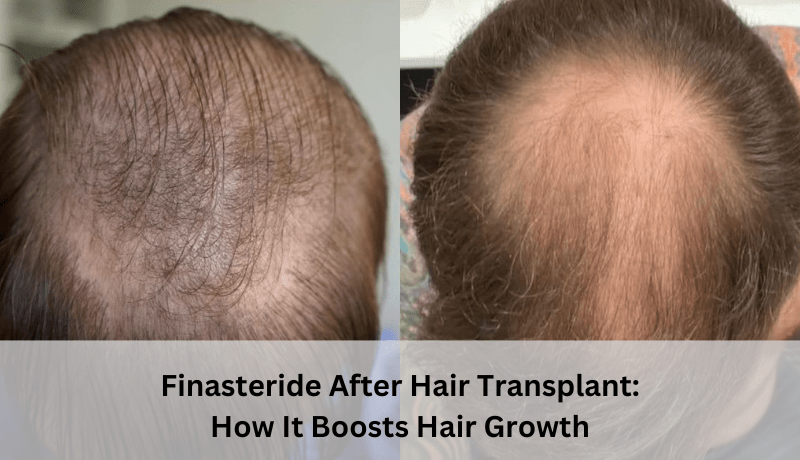Finasteride After Hair Transplant: How It Boosts Hair Growth

At Beverly Hills Hair Restoration, we understand that undergoing a hair transplant is a significant decision, and achieving optimal results is a top priority for our patients. After all, restoring a full head of hair can do wonders for your self-confidence and overall appearance. But did you know that there’s a critical factor that can enhance your hair transplant success even further? Introducing finasteride after hair transplant—a powerful medication that helps ensure long-lasting, fuller hair growth.
What is Finasteride?
Finasteride is an FDA-approved oral medication commonly used to treat male pattern baldness, also known as androgenetic alopecia. The medication works by inhibiting the enzyme 5-alpha reductase, which is responsible for converting testosterone into dihydrotestosterone (DHT). DHT is the hormone that causes hair follicles to shrink, leading to hair thinning and loss. When taken consistently, finasteride helps reduce DHT levels in the scalp, protecting the hair follicles from further damage. It is an excellent post-transplant treatment to support and maintain your new hair growth.
Why Consider Finasteride After a Hair Transplant?
After a successful hair transplant at Beverly Hills Hair Restoration, you’re well on your way to restoring your hair. However, while transplanted hair follicles resist DHT, your existing hair remains vulnerable to thinning and loss. It is where finasteride becomes essential after a hair transplant. Taking finasteride post-surgery protects the surrounding native hair, preventing further hair loss and ensuring a natural, fuller look.
Enhanced Hair Growth
One of the primary benefits of using finasteride after a hair transplant is that it promotes hair growth by lowering DHT levels. It creates a healthier scalp environment, encouraging both transplanted and existing hair to grow thicker and stronger.
Prevents Future Hair Loss
While your newly transplanted hair is immune to DHT, the rest isn’t. Finasteride helps prevent further hair loss in areas that haven’t undergone transplantation. By maintaining these vulnerable hair follicles, you can keep your overall hairline intact and avoid the need for additional transplant procedures.
Extends the Longevity of Your Transplant
Investing in a hair transplant is a life-changing decision, and using finasteride after a hair transplant helps extend the longevity of your results. Since the medication protects your non-transplanted hair from DHT, you can enjoy your new look for many years.
How Finasteride Works with Hair Transplants
At Beverly Hills Hair Restoration, we often recommend combining a hair transplant with finasteride treatment to maximize results. Here’s how the two work together for optimal hair restoration:
- Pre-Surgery Preparation: Before your hair transplant, taking finasteride can help stabilize any existing hair loss. It ensures that your transplant addresses the most critical areas of hair thinning without the risk of losing more hair shortly.
- Post-Surgery Support: After your procedure, using finasteride after a hair transplant provides essential support to the surrounding hair. The transplanted hair will grow naturally, while finasteride protects and strengthens the non-transplanted hair.
- Long-Term Maintenance: Over time, regular use of finasteride can help prevent the need for further transplants. You preserve the hair you’ve worked hard to restore by halting DHT production.
What to Expect from Finasteride Treatment
When you begin using finasteride after a hair transplant, patience is vital. Hair growth is a gradual process that can take several months to see noticeable results. Here’s a breakdown of what to expect during your finasteride treatment:
- First Three Months: During the early stages, finasteride works behind the scenes to lower DHT levels. You may not see visible hair growth immediately, but rest assured that the medication is helping protect your hair follicles.
- Three to Six Months: You’ll notice hair texture and thickness improvements around the three to six months. Your existing hair will feel stronger, and shedding should decrease.
- Six Months and Beyond: You should see significant hair density and coverage improvements by six months. Continued use of finasteride after hair transplant will help maintain these results over the long term.
Is Finasteride Right for You?
Finasteride is highly effective for many men experiencing male pattern baldness, but it’s not suitable for everyone. Here are some factors to consider when deciding if finasteride after hair transplant is right for you:
- Age: Finasteride works best for men in the early stages of hair loss. If you’re experiencing mild to moderate thinning, this medication can help preserve your existing hair and prevent future loss.
- Women: Finasteride is not typically recommended for women, especially those of childbearing age, as it can cause birth defects. However, other treatment options may be available for women experiencing hair loss.
- Commitment: Taking finasteride requires a long-term commitment. The medication should be taken daily and consistently over an extended period for best results.
Read More: Descubra los beneficios del tratamiento Smart FUE
Conclusion
If you’ve undergone a hair transplant at Beverly Hills Hair Restoration, you’re already on the path to achieving a fuller, thicker head of hair. To enhance and protect your results, finasteride after a hair transplant offers a powerful solution for long-term hair growth and maintenance. By reducing DHT levels, this medication helps prevent future hair loss, extends the life of your transplant, and keeps your natural hairline looking its best.